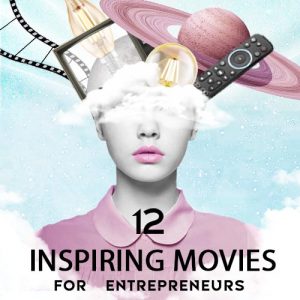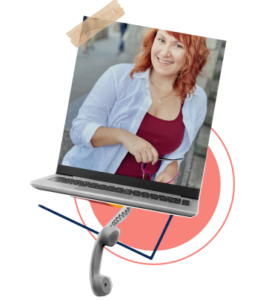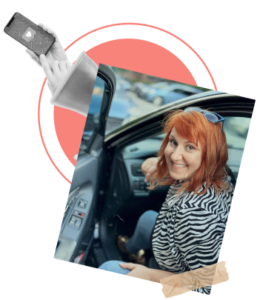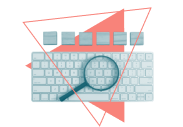It’s Not Traffic—It’s a CJM & UX Research Problem
Key Points
- Your site isn’t converting because it talks at your audience—not with them. You need a customer journey map that mirrors their thoughts, questions, and hesitations.
- Design doesn’t drive results—clarity and empathy do. A pretty site won’t work unless it’s backed by UX strategy that solves pain points before they’re even spoken.
- Funnels should feel like conversations, not traps. Create a flow that guides, nurtures, and earns trust—step by step, emotion by emotion.
As I analyzed my website for one month, I discovered something that changed everything: my website wasn’t converting.
Not because the design was ugly or the offer wasn’t valuable, but because there was a huge disconnect.
There was no clear understanding of my customer journey, no intentional funnel structure, and no strong, visible unique selling proposition (USP).
And honestly, I didn’t fully understand what a USP truly meant—especially one that reflected the real, painful situations my clients were facing.
It wasn’t just a design flaw—it was a strategy flaw. Nothing aligned with today’s attention spans or user expectations.
UX design is a popular field these days for a reason—because users expect more. And I knew I had to fix it.
If you’re anything like me, you’ve probably spent countless hours refining your skills, building your business, and posting content.
But if your website isn’t guiding people clearly—if it doesn’t feel like it’s built for them from the first click—they’re going to bounce. You’re not alone.
I know the pain of wondering why great work isn’t getting attention.
I’ve been in the middle of late-night tweaks, endless testing, and still seeing analytics that don’t move.
It’s frustrating. But the good news is: there is a way to fix it.
And it starts with Customer Journey Mapping (CJM) and UX Research.
What is Customer Journey Mapping (CJM)?
CJM is the process of stepping into your customer’s shoes to see your business through their eyes. It’s about understanding their motivations, frustrations, questions, and decisions at every touchpoint—from the first social media post they see to the moment they hit “buy.”
✅But here’s where UX Research becomes essential: instead of guessing what your users want or feel, you gather real data—through interviews, surveys, heatmaps, and behavior tracking—to understand their true experience.
This research guides your customer journey map with insights that are grounded in reality, not assumptions.
UX design and CJM go hand-in-hand because user experience isn’t just how something looks.
It’s how it feels to interact with your brand at every level.
And when you combine UX Research with journey mapping, you design smarter systems that not only look great—but convert more and serve your audience better.
What Is UX Research and Why It Matters
UX Research is the backbone of great user experience design.
It’s how you stop guessing and start truly understanding what your audience needs, expects, and experiences.
While CJM helps you map the journey, UX research tells you what’s really happening during that journey.
UX research includes methods like usability testing, surveys, interviews, behavior analysis, and heatmaps to gather real data from users.
This information helps you:
- Identify friction points users encounter on your site;
- Uncover what your ideal customers actually want (not what you assume they want;)
- Improve website navigation, layout, and content hierarchy;
- Develop more personalized and intuitive user flows.
Instead of building from assumptions, you start designing from truth—and that truth leads to real conversion.
UX Research: Why It Matters
UX research is about listening. Not just assuming what your clients want, but actually diving into their behaviors, feedback, and outcomes.
CJM uses this insight to build a visual map of what your ideal customer is thinking and doing. From their goals to their pain points to their hesitations, you gather real data and then design around it.
Why Customer Journey Mapping Is a Game-Changer
CJM isn’t just for tech companies or eCommerce brands.
It’s not just for big tech companies—you can check out some UX design examples to see how service providers, coaches, and creatives are using them to grow online.
Here’s why it matters:
- You stop guessing and start solving.
- You identify what really stops conversions.
- You learn how to guide people through decision-making faster.
- You get clearer on what makes you different and why people should choose you.
What CJM Actually Looks Like (Step-by-Step)
- Define Your Customer Personas. Get specific. Not just “women 30-50.” What are their goals? What are they struggling with? What do they value most?
- Identify the Journey Stages. What does Awareness look like for them? What triggers them to start looking? What questions do they ask in the Consideration stage? What builds trust?
- Pinpoint Critical Touchpoints. From Instagram to landing pages to confirmation emails, map every step they take.
- Map Emotional Highs and Lows. Where do they feel hope? Confusion? Excitement? These emotional cues are gold for messaging.
- Use Data + Empathy. Blend analytics (drop-off points, time-on-page) with real user interviews or surveys.
- Create a Storyboard or Blueprint. Literally draw it out. You’ll be surprised how many gaps show up when you see it visually.
Pain Points and Touchpoints
To improve user experience, you need to clearly identify two things:
- Pain Points: What problems or friction points are they facing? ✅Example: “They can’t find clear pricing,” or “The contact form is overwhelming.”
- Touchpoints: Where does your customer interact with your brand? ✅Example: “Instagram ad,” “Email welcome series,” “Booking confirmation page.”
When you line these up across the journey, you can start optimizing each point to be smoother, clearer, and more helpful.
Common Pain Points Clients Like Us Face
- People land on the website and still don’t know what you do.
- No clear path to take the next step.
- Too much copy—not enough clarity.
- Messaging is about you, not them.
- No emotional connection that makes people feel seen.
Traffic Isn’t Your Problem—Lack of UX Research and an Inside-Out Approach Is
A lot of us build our websites, services, and content from the inside out.
We start with what we do, what we offer, what we want to say. But high-converting funnels and intuitive UX start from the outside in.
Ask yourself:
- What do they want to feel when they land on your site?
- What do they need to see to trust you?
- How can you solve a problem before they even ask for help?
Create Funnels That Respect Their Journey
Funnels don’t need to be manipulative or cold.
They should feel like a conversation—where every step leads naturally to the next.
Use CJM to build out your funnel:
- Top of Funnel: Meet them where they are. Show empathy. Offer clarity.
- Middle of Funnel: Educate. Share case studies. Build trust.
- Bottom of Funnel: Make the ask. Keep it simple. Reduce friction.
Final Thoughts
If your website isn’t converting, it’s not always about better design or more traffic. It’s often because there’s a disconnect between what your customer needs and what your funnel delivers—which is exactly why learning how to choose a UI UX design studio that understands customer psychology and funnel strategy is critical.
When you understand your audience’s journey—and you build your strategy around it—everything starts to click.
That’s what happened to me. And it’s exactly why I now help others do the same.
Need help mapping your own customer journey? Let’s work together to align your strategy, refine your message, and build a funnel that actually converts.




















